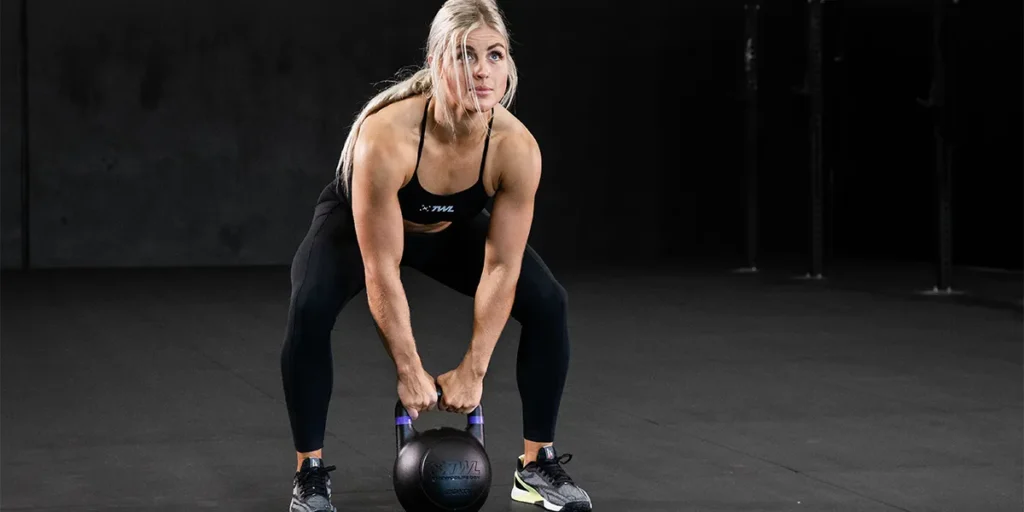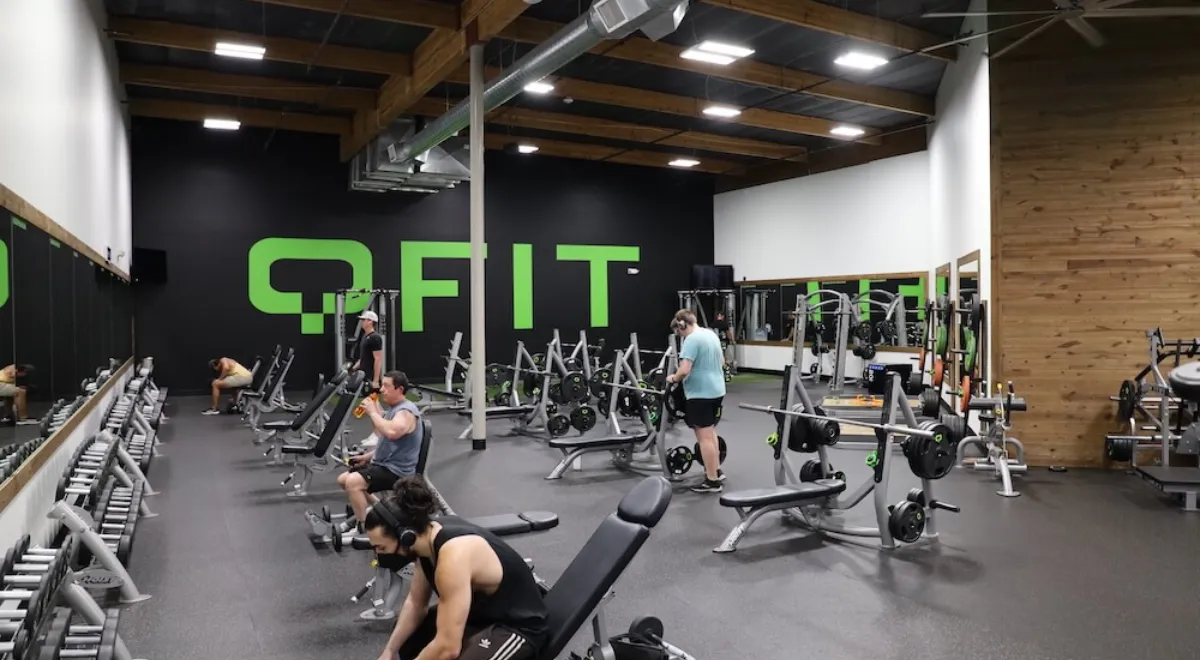The sumo squat, with its wide stance and outward-turned toes, is a dynamic exercise that uniquely challenges your lower body. Often seen as a variation of the traditional squat, sumo squats offer distinct benefits, making them a valuable addition to any workout routine.
Table of Contents
ToggleWhat are Sumo Squats?
Sumo squats involve lowering yourself into a squat position with your feet placed wider than shoulder-width apart and toes pointed outwards. This stance emphasizes the inner thigh muscles, also known as the adductors, while still engaging the quads, glutes, hamstrings, and core.
Benefits of Sumo Squats
- Inner Thigh Strength: Sumo squats are known to effectively target the adductor muscles, which are often neglected in traditional exercises. Strong inner thighs improve stability, balance, and athletic performance.
- Lower Body Power: Like regular squats, sumo squats build strength in your quads, glutes, and hamstrings, leading to increased power for activities like jumping, sprinting, and climbing stairs.
- Improved Hip Mobility: The wide stance in sumo squats opens up the hips, promoting flexibility and reducing the risk of injury.
- Core Engagement: Maintaining a straight back and engaged core throughout the movement strengthens your core muscles, improving overall stability and posture.
How to Do Sumo Squats Properly
- Stance: Stand with your feet wider than shoulder-width apart, toes pointed outwards at a 45-degree angle.
- Engage Your Core: Brace your core muscles by drawing your navel towards your spine.
- Lower Yourself: Begin to squat down by bending your knees and hips as if sitting back in a chair. Keep your back straight and chest lifted.
- Depth: Descend until your thighs are parallel to the floor or slightly lower if comfortable. Avoid letting your knees cave inwards.
- Push Through Heels: Press through your heels to drive yourself back up to the starting position.
- Repeat: Perform 8-12 repetitions for 2-3 sets.
Tips for Perfect Sumo Squats
- Focus on Form: Prioritize proper form over weight. Ensure your knees track over your toes and your back remains neutral throughout the movement.
- Keep Your Heels Grounded: Maintain contact with the ground throughout the squat to maximize muscle engagement.
- Don’t Round Your Back: Avoid hunching your back as you lower yourself down. Keep your core engaged and your chest lifted.
- Breathe: Inhale as you descend and exhale as you push back up.
Variations of Sumo Squats
- Weighted Sumo Squats: As you gain strength, add weight using dumbbells, kettlebells, or a barbell held across your back.
- Jump Sumo Squats: Add an explosive element by incorporating a jump at the top of the movement.
- Sumo Squat Hold: Hold the squat position at the bottom for a few seconds to challenge your core stability.
Who Should Do Sumo Squats?
Sumo squats are suitable for most fitness levels, from beginners to experienced athletes. They can be a valuable addition to your leg workouts or as part of a full-body routine.
Safety Considerations
- Listen to Your Body: If you experience any pain during the exercise, stop immediately and consult a healthcare professional.
- Warm-Up: Always perform a proper warm-up before starting your workout to prepare your muscles for exercise.
- Start Light: Begin with bodyweight sumo squats and gradually increase the difficulty as you get stronger.
FAQs about Sumo Squats
- Are sumo squats better than regular squats?
Both exercises offer benefits, but sumo squats place more emphasis on the inner thighs. Choose the variation that best suits your goals and fitness level.
- Can I do sumo squats with bad knees?
Sumo squats may be a good option for those with knee pain as the wider stance puts less stress on the knee joint. However, consult a healthcare professional before starting any new exercise program.
- How many sumo squats should I do?
Aim for 2-3 sets of 8-12 repetitions. You can adjust the sets and reps based on your fitness level and goals.
- What muscles do sumo squats work?
Sumo squats primarily target the inner thighs, quads, glutes, hamstrings, and core.
- Can I add weight to sumo squats?
Yes, once you have mastered the bodyweight movement, you can gradually add weight using dumbbells, kettlebells, or a barbell.

Sumo Squats vs. Regular Squats: A Side-by-Side Comparison
| Feature | Sumo Squats | Regular Squats |
|---|---|---|
| Stance | Wider than shoulder-width apart, toes pointed outwards | Shoulder-width apart, toes slightly outward or forward |
| Muscle Focus | Inner thighs (adductors), glutes, quads | Quads, glutes, hamstrings, core |
| Hip Mobility | Greater emphasis on hip mobility | Less emphasis on hip mobility |
| Depth | May allow for slightly deeper squats | Squat depth may be limited by quad flexibility |
| Difficulty | Shoulder-width apart toes slightly outward or forward | May require more core engagement and balance |
drive_spreadsheetExport to Sheets
Choosing the Right Squat for You
- Inner thigh: If your primary goal is to strengthen your inner thighs, sumo squats are the clear winner.
- Overall leg strength: Regular squats are a great option for building overall lower body strength.
- Hip mobility issues: Sumo squats can help improve hip mobility, making them a good choice if you have tightness in your hips.
- Fitness level: Beginners may find sumo squats easier to perform due to the wider stance.
Conclusion
Sumo squats are a valuable exercise that offers a unique set of benefits. By incorporating them into your workout routine, you can strengthen your inner thighs, improve lower body power, and enhance your overall fitness. Remember to prioritize proper form, start with bodyweight exercises, and gradually increase the difficulty as you get stronger. If you have any concerns, consult with a healthcare professional before starting any new exercise program.














